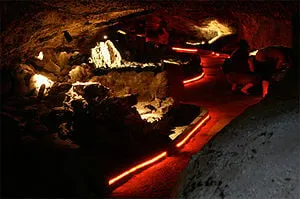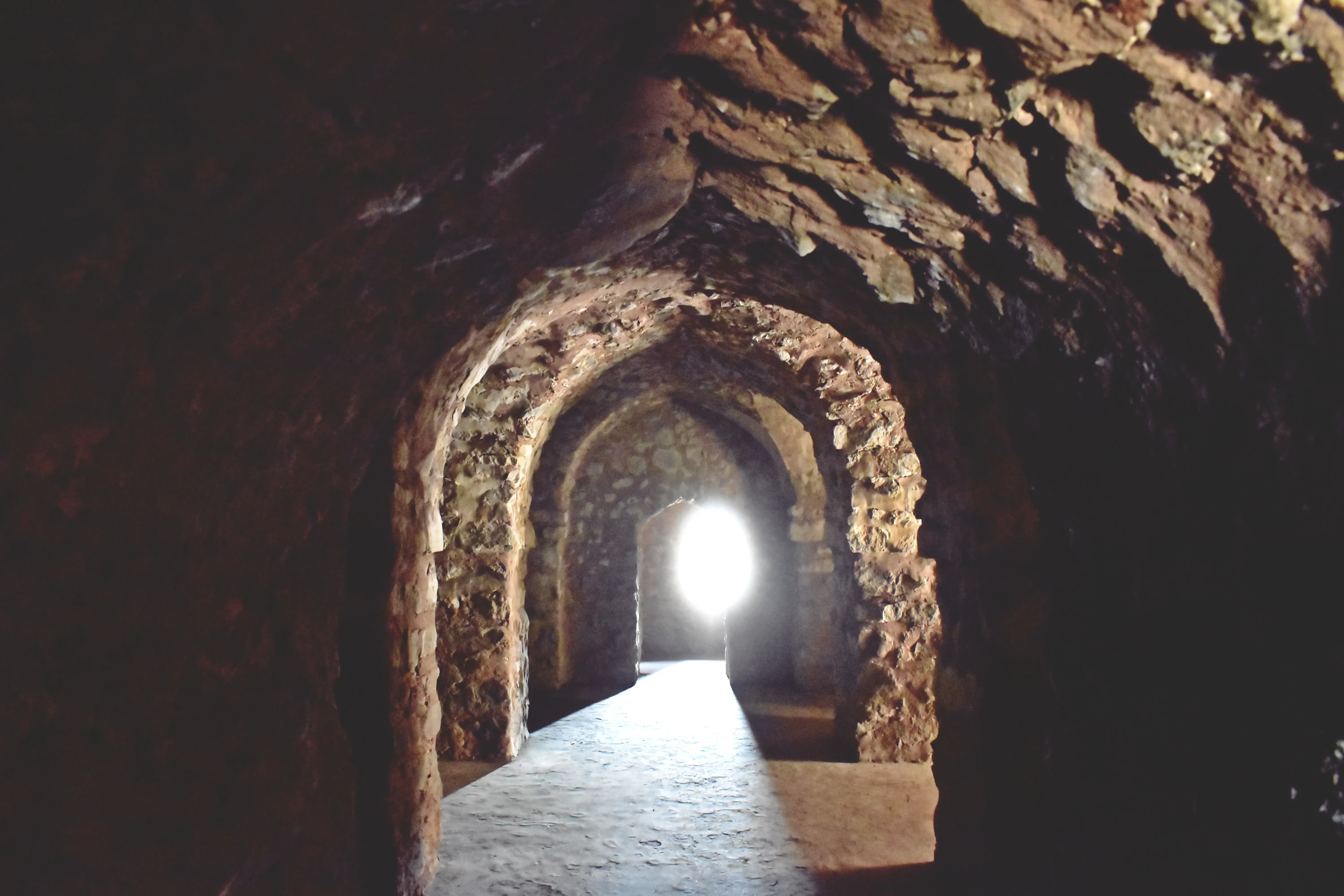Lava Tubes

Close-up of a skylight on the coastal plain, Hawai`i Volcanoes National Park, with lava stalactites forming on the roof of the lava tube. (Photo credit: Wikipedia)
Lava tubes are fun! Not to mention intriguing entrances to the underworld of the Mu…
Sculpting underground rooms is perhaps considered less fun by many, but there are those of us who enjoy this sort of challenge! Just look at the underground chapel at the Damanhur community in Italy!
We are still searching for an entrance to the Mines of Moria, but we have discovered some lovely lava tubes that might be large enough for an Earth hobbit or a dwarf to inhabit… with a little sprucing up, of course… Although a hard hat might still be recommended, especially for humans or the absent-minded…
Existing partial collapses of lava tubes and bubbles often provide multiple entrances to underground spaces and passageways, ensuring cross ventilation as well.
Small lava tubes have beautifully sculpted arched ceilings, and frequently are studded on the edges with the outsides of lava tree molds, making perfectly integrated columns that transition seamlessly into the ceiling. From a dwarf’s perspective, all that is needed is to excavate the floor a few feet to produce an underground passageway reminiscent of the finest of cloisters in Middle Earth.

Illuminated lava tube at Lava Beds National Monument, California (Photo credit: Wikipedia)
Small lava bubbles and isolated chambers, typically up to about 100 square feet and up to a meter in height likewise hold tantalizing potential as underground rooms, with the excavation of the floors. Partial excavation of a floor could allow for the installation of an underground hot pool that would mimic a natural geothermal spring. With some red LED rope lighting (especially if it is placed so that the lighting is indirect), you might begin to imagine that the water is being heated by the earth rather than the solar hot water installation up in the world above!
Because much of the basaltic lava of the shield volcano is highly porous, groundwater rapidly percolates deep into the earth here. Only dense “blue rock” flows hold water longer in local depressions in that layer of flow. There are no basements or underground dwellings in Hawai’i, of course… But in Middle Earth, well, that is another story. A story that we are just beginning to write… carved in stone, you might say.

Undercroft
With wide overhanging roofs, the eleven feet of rain that fall each year are steered clear of the building’s foundation. When moisture-wicking surface soils are gleaned for gardens from within that drip line, the underworld of a structure becomes significantly drier, which is of course good news for the longevity of wooden framing lumber in the underbelly of the structure. When excavated further, typically by happily whistling dwarfs, this space can transform from a mere crawl space between footings to a virtual Undercroft. Guttering the structure of course will help even more in maintaining a dry Undercroft space… and if there is anything that is essential to the agrarian life in the rain forest, it is dry space!
Underground spaces are naturally cool and maintain a comfortable and even temperature day and night. A dry underground room with a natural water supply in one corner can be utilized as a Hawaiian refrigerator by draping a cloth over a stick frame and allowing an edge or corner of the cloth to dip into the pool of water. Water is wicked up into the cloth, and as it evaporates, it naturally cools the space around and within it. This evaporative cooling technique can help to keep certain foodstuffs longer, such as root vegetables and fruits. Of course, a food-safe constructed with rodent-proof wire cloth is an essential element in such a design, just as it is in the supra-terrestrial world of humans, elves, and their water and wood hobbit kin….
